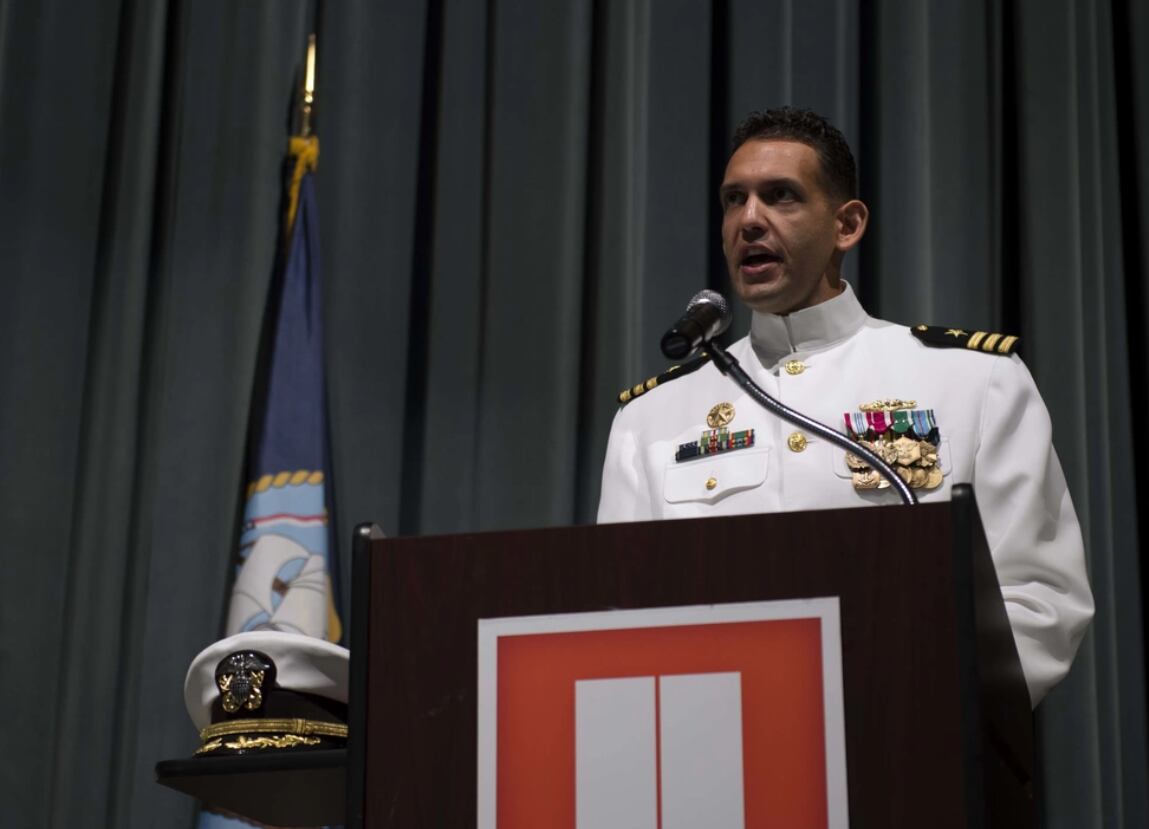The Navy’s submarine community began a “navigation stand-down” this week following the submarine Connecticut’s collision with an undersea mountain last month in the South China Sea.
U.S. Submarine Forces officials said that, unlike prior surface fleet or aviation stand-downs, the stand-down announced Wednesday will not involve a halting of all submarine activities.
Instead, crews will review the procedures required for navigation planning, operations, risk management and best practices, while absorbing lessons learned from the Connecticut mishap, SUBFOR spokesman Cmdr. Paul Macapagal told Navy Times.
Macapagal said the stand-down is only “near term,” but did not provide a timeline for when the effort will be completed.
The stand-down was conveyed to the submarine community via a joint message sent by SUBFOR’s commander, Vice Adm. William Houston, and the head of Submarine Force Pacific, Rear Adm. Jeffrey Jablon.
RELATED

Macapagal declined to release a copy of the joint message to Navy Times, saying that certain portions are classified.
While the Navy appears to be disseminating lessons learned regarding the Oct. 2 collision, the sea service’s investigations into the mishap remain ongoing and few details have been made public.
But in a speech Wednesday at a Navy Submarine League event, Houston suggested the service knows what happened with the Connecticut and is working to get those lessons out to the fleet.
“We have very rigorous navigation safety procedures, and they fell short of what our standard was,” he told attendees.
Houston noted the sub community’s “exceptionally high standards” required of the men and women who operate secretive, nuclear-powered steel tubes far below the surface.
“We know the details [of the mishap] and we’re sharing it, and that goes back to the critique and oversight process that we have,” he said. “We will find our deficiencies and we will correct them.”
The Japan-based U.S. 7th Fleet announced on Nov. 4 that the Connecticut’s commanding officer, executive officer and chief of the boat were all relieved in connection to the collision.
While commands generally don’t release the reasons for such firings, a 7th Fleet statement at the time noted that “sound judgement, prudent decision-making and adherence to required procedures in navigation planning, watch team execution and risk management could have prevented the incident.”
RELATED

Seventh Fleet’s investigation into the collision is completed and awaiting final endorsement, the command said earlier this month, but officials there have declined to say whether that probe will be made public.
Speaking to reporters Wednesday, Chief of Naval Operations Adm. Mike Gilday pledged transparency regarding what happened and noted that the sea service has been transparent with Congress regarding the incident.
“We’ll get to a point where we can release those investigations, absolutely,” Gilday said.
Asked whether the Connecticut collision signals deeper readiness issues within the sub community in the same way that two fatal surface fleet collisions in 2017 revealed deeper dysfunction in that community, Gilday would only say that the Navy is taking the sub collision “very seriously.”
“It’s a gut punch when you lose an asset like that, and so…we’re taking a deep and very thoughtful look at the investigation, what do we need to learn from that, force-wide,” he said.
“The sea is a very dangerous environment, and we have an important responsibility to learn those lessons,” Navy Secretary Carlos Del Toro added.
Officials have yet to release the nature or extent of damage to Connecticut, or a timeline for when the pricey and elite boat might return to the fleet.
Connecticut is one of three Seawolf-class submarines, $3 billion boats that are bigger, quieter and capable of carrying more weapons than some other sub classes.
Precisely what happened remains unclear, but Navy analysts say the South China Sea is a rugged, mountainous and at-times shallow undersea terrain compared to other regions.
Geoff is the managing editor of Military Times, but he still loves writing stories. He covered Iraq and Afghanistan extensively and was a reporter at the Chicago Tribune. He welcomes any and all kinds of tips at geoffz@militarytimes.com.




